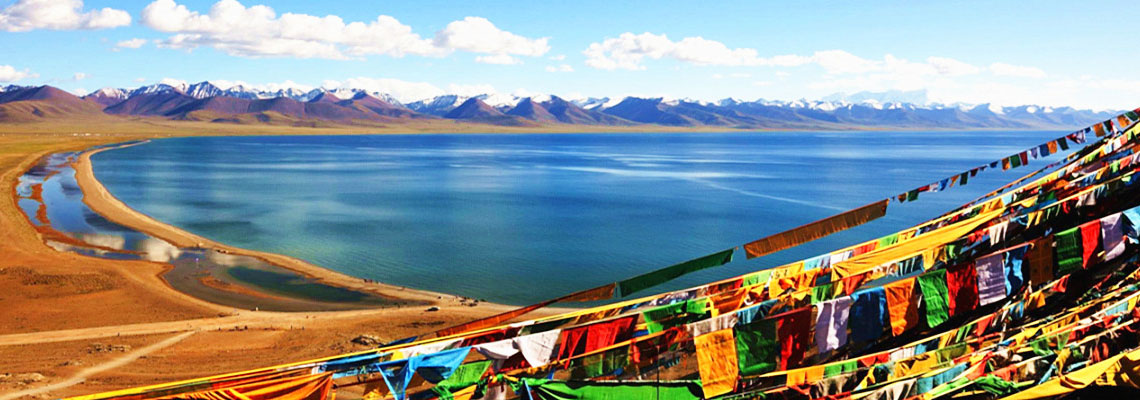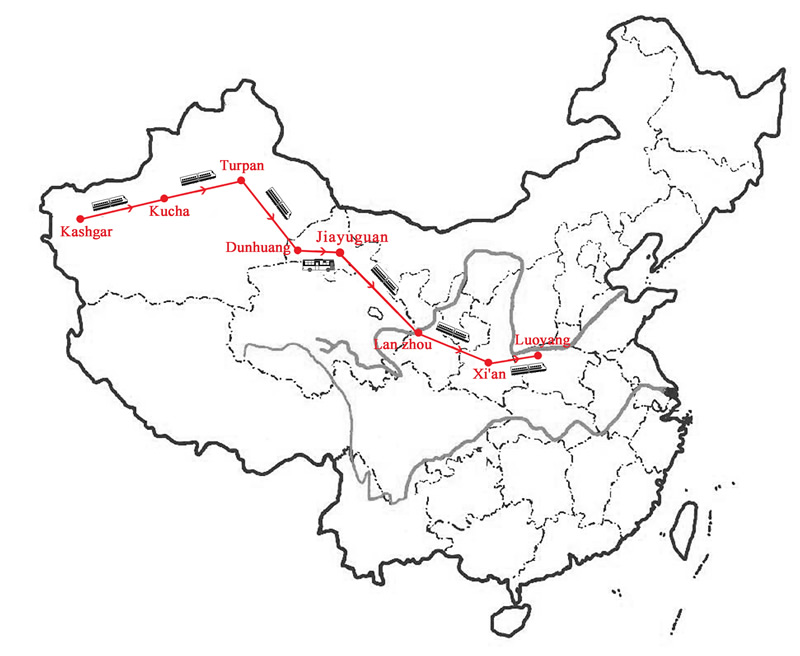
Day 1
BeijingPlease arrange on your own for the international and local flights to Kashgar. We will meet you at Kashgar airport and transfer you to the hotel for check in. You will have the rest of the day free to do a little exploration at your leisure.
Day 2
Kashgar-
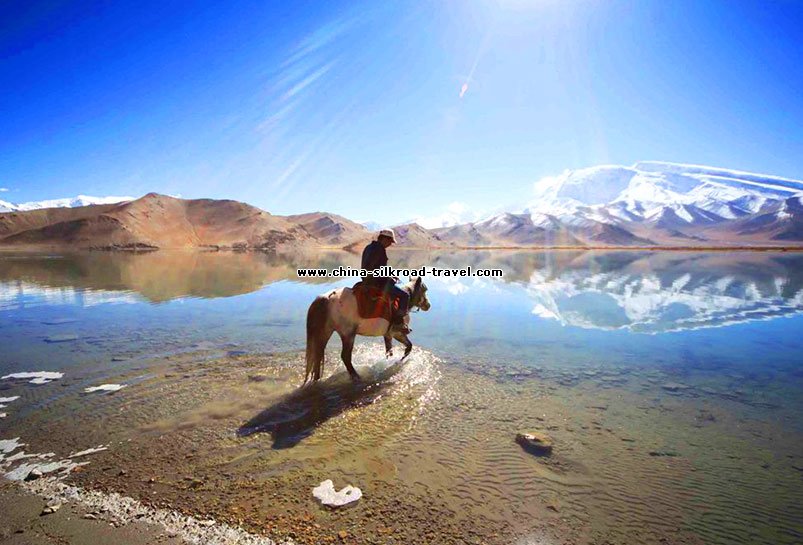
- Karakul Lake
After breakfast we will drive on China and Pakistan highway, as known as Karakorum Highway to visit Karakul Lake and enjoy Pamir landscape.
Karakul Lake: At an altitude of 3600m, this is the highest lake of Pamir plateau, near the junction of Pamir, Tianshan (Heavenly Mountain), and Kunlun Mountain ranges. Surrounding by snow-covered mountain throughout the year, the three highest peaks visible from the lake are Muztag Ata (7546m), Konur Tagh (7649m) and Kongur Tiube (7530m). This lake is popular among travelers for its beautiful scenery and the clarity of its reflection in the water, whose color ranges from a dark green to azure and light blue. There are two Kirgiz settlements along the shore of Karakul Lake, a number of yurts located at about 1 km east of the bus drop-off point and there is also a village with stone houses on the western shore.
Day 3
Karakul lake-
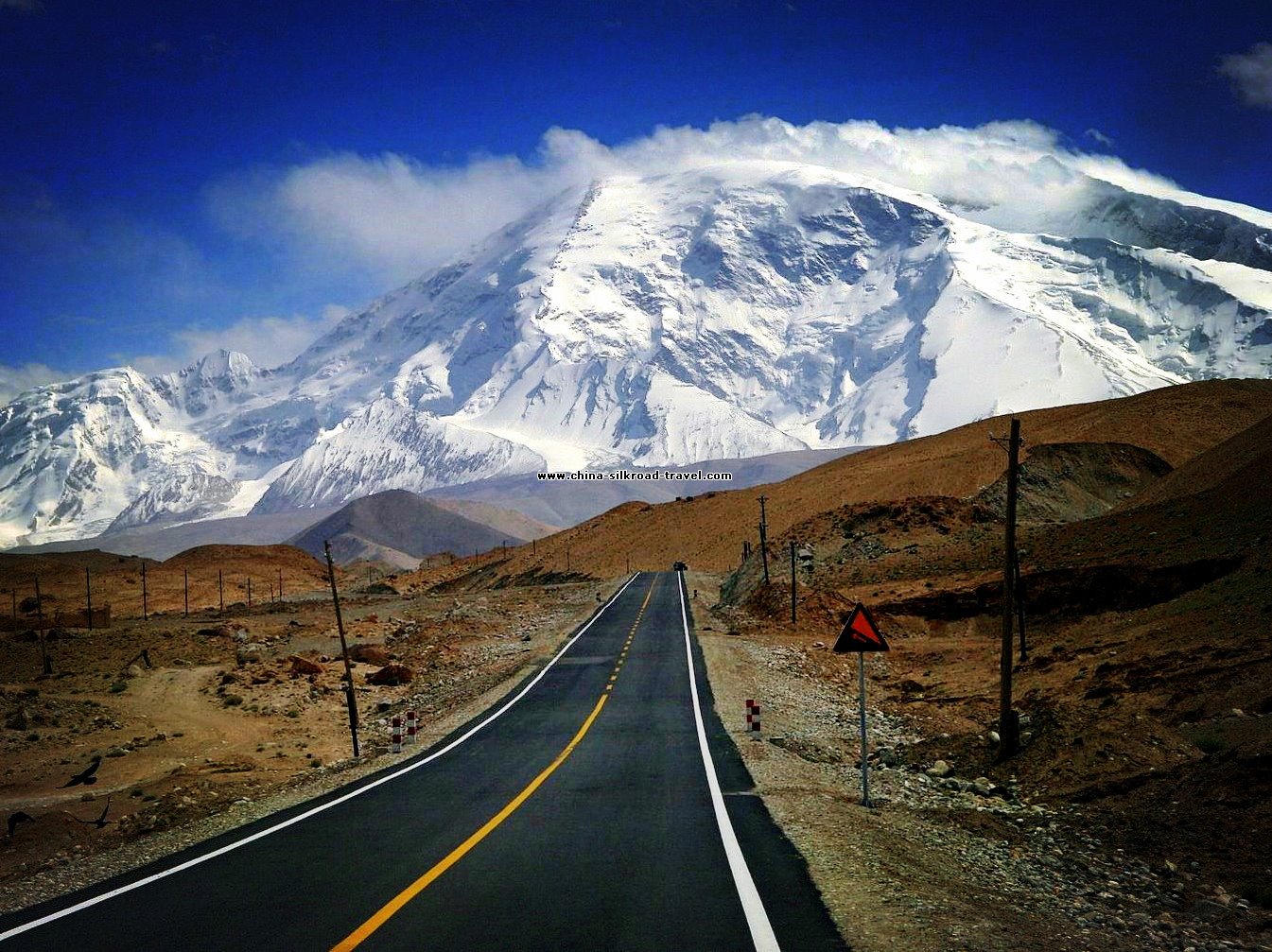
- Karakorum high way
From the Karakul Lake, we will continue driving on the Karakorum Highway to Taxkorgan County.
Karakorum Highway: The Karakorum Highway, or China-Pakistan Friendship Highway, is more than 1200 km long. It was opened to the public in 1979. Due to its high elevation (more than 4700m at its highest point) and the difficult conditions in which it was constructed, it is often called the 8th Wonder of the World. The Karakorum Highway traces one of the ancient Silk Roads. The Silk Road merchants then had to climb through the Wakhan Corridor, north of the high mountains of Karakorum and Hindu Kush, to get to India, Pakistan and onward to Iran. While you are on the Karakorum Highway, you can enjoy the scenery of Mt. Muztagh, and Taxkorgan, which in Persian language means stone castle. The brave Tajiks people had lived their nomadic life in Taxkorgan on the Pamir Plateau for more than 2000 years.
Day 4
Taxkorgan county-
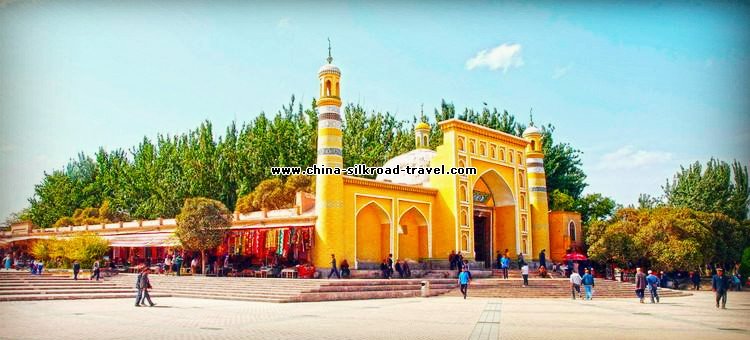
- Id Kah Mosque
In the morning, we will return to Kashgar, and we will check into the hotel upon arrival. Then we will visit Id Kah Mosque, Handicraft Street, Apak Hoja Tomb.
Id Kah Mosque: This is the largest mosque in China, and the most famous mosque in Xinjiang. The construction of the mosque started in the middle of the 15th century, and the mosque has gradually developed to its present size. The buildings of Id Kah Mosque look magnificent and solemn, and displaying the artistic styles of Islamic mosque architecture. This Mosque has an area of about 16,800 square meters, consisting of the Pray Hall, the Koran teaching Hall, the Corridor, the Arches and other buildings attaching to it. The Pray Hall of the mosque, which can hold 4,000 prayers, is supported by 140 carved wooden pillars.
Handicraft Street: Handicraft Street, or Zhiren Street, is a fascinating place showing the distinctive custom and culture of Kashgar, with many full-time handicraftsmen working on the street and hundreds of workshops and booths alongside. This street is an exhibition for traditional Kashgar and mid-Asian handicrafts. Copper, metal, porcelain, woodwork, jewellery and other goods are seen to be made here and you will marvel at the incredible devices like the wooden objects that prevent babies from wetting the bed.
Apakh Hoja Tomb: This Mazar is the holiest place in Xinjiang for the Muslims, and an architectural treasure. Built in 1640, it is reminiscent of the Central Asian artistic style of Samarkand or Isfahan. The site is also known as the Xiang Fei (Fragrant Concubine) Tomb in memory of Abakh Khoja's granddaughter, Iparhan, who was the Fragrant Concubine of Emperor Qianlong of Qing Dynasty. A handsome blue-and-white tiled gate leads into the compound, which includes a small religious school and the Abakh Khoja family tomb. The latter is domed and faced with muti-color tiles. It is the most complete Islamic tomb dating from the beginning of the Qing Dynasty.
Day 5
Kashgar-
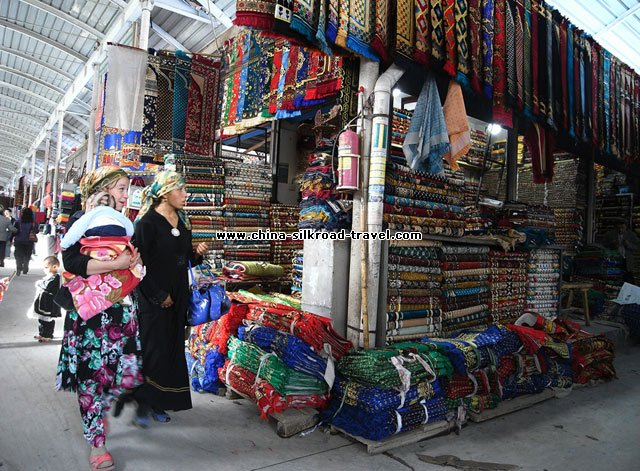
- Sunday Bazaar
Today we will visit the Sunday Bazaar, after which you will be free to prepare some food for the train ride to Kuqa. We will meet you at the railway station, transfer you to the hotel and check you in.
Sunday Bazaar: This is called “Sunday” bazaar but it is open daily, even though it is busiest on Sundays. Streets near this big market are jammed with farmers and buyers arriving by donkey cart, truck, bicycle, horseback, ute, motobike, or on foot, with their animals. It is loud, lively and cheerful as they arrive, eat breakfast, set up their animals and check out the action. Cattle, sheep (they definitely look different), goats, donkeys, horses have their own sections. Sellers show off their animals as “good eaters” (most go as livestock, not meat). The entire experience is fascinating and fun.
Day 6
Kuqa-
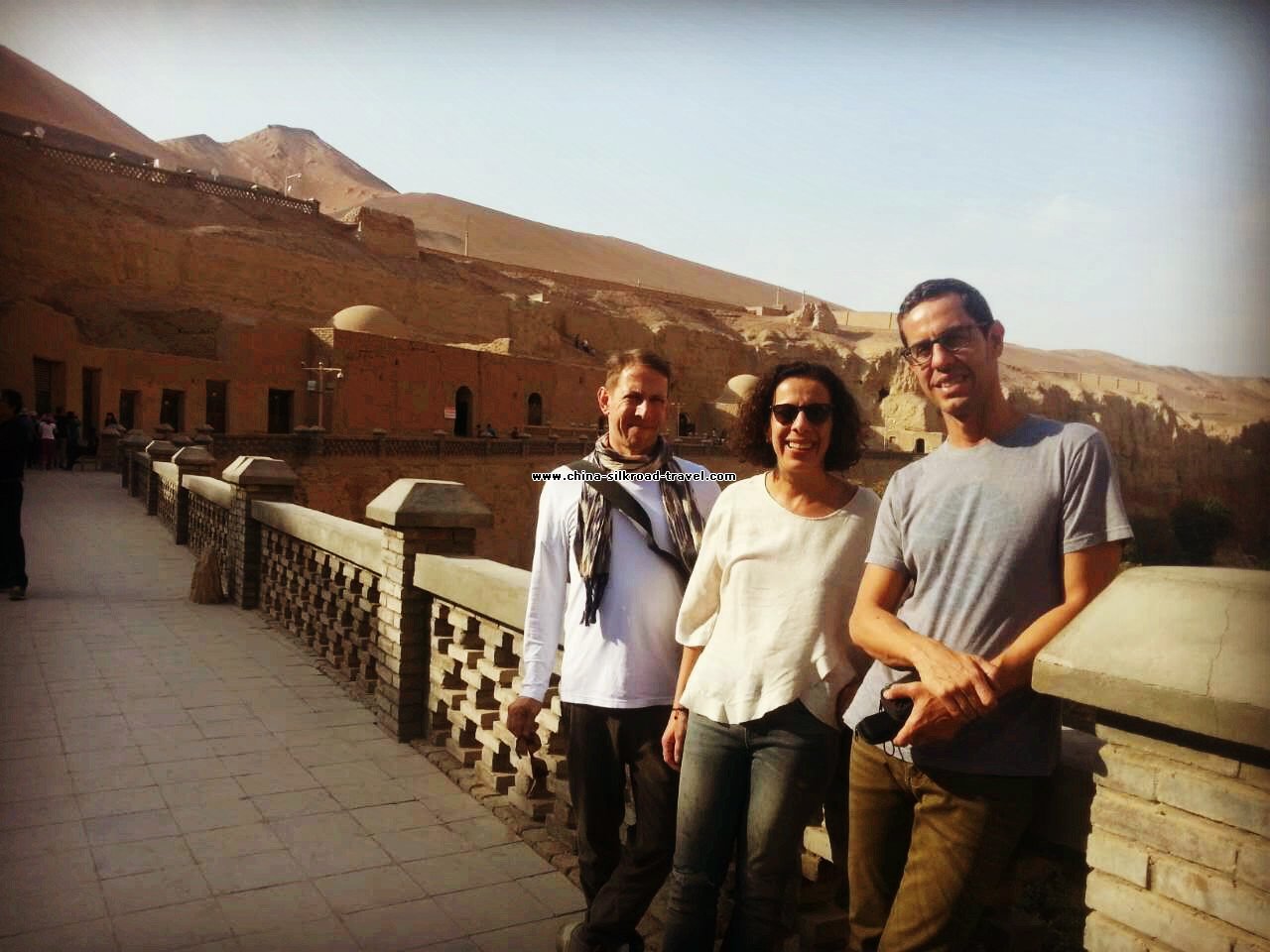
- Kizil Grottoes
We will visit the Tianshan Great Canyon, Kizil Grottoes, Kuqa Mosque.
Great Tianshan Canyon: Known as the most stunning Canyon in China, five thousand meters in total length, and two hundred meters in average depth, this great canyon was once the ancient river course for Kucha River. It would be a real treat for us visitors to take a half-hour walk in the great canyon to experience the gorgeous scenery.
Kizil Grottoes: Kizil Grottoes (Kizil being spelled variously as Qizil or Qyzyl) are a set of Buddhist rock-cut caves located near Kizil Township in Baicheng County, Xinjiang. The site is located on the northern bank of the Muzat River 75 km by road west of Kucha. This area was once a commercial hub of the Silk Road. The caves are said to be the earliest major Buddhist cave complex in China, with development occurring between the 3rd and 8th centuries. The contents of the cave paintings are very rich, including jataka stories, Buddha’s life story and the stories about karma. The Kizil Caves complex is the largest of the ancient Buddhist cave sites that are associated with the ancient Tocharian kingdom of Kucha, as well as the largest in Xinjiang.
Kuqa Mosque: It is located in the north of the old city of Kucha and covers an area of 1165 square meters. With a capacity of 3000 people, it is the second largest mosque in Xinjiang. The mosque consists of a main worshiping hall, a small worshiping hall, a minaret, a qubbah, a religious court and hostels, etc. The mosque is a representative of Uygur architectural art of the Qing Dynasty.
Day 7
Kuqa-
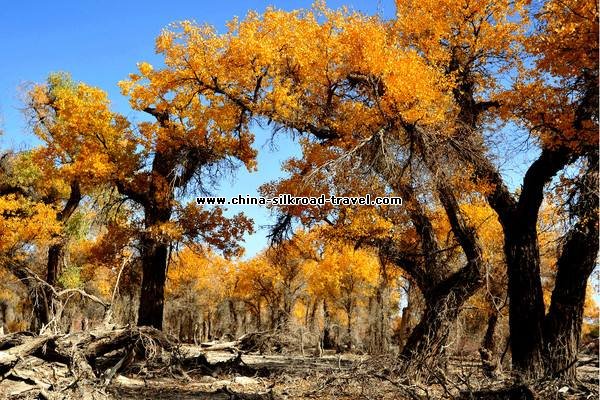
- Diversifolious poplars Park
We will visit the Subashi Ruins, Taklamakan Desert and Tarim River. After that you will be taking the overnight train to Turpan.
Subashi Ruins: Located 23 kilometers northwest of Kuqa County, Xinjiang Province are the ruins of the Subashi Temple. The Ruins are divided by Kuqa River into eastern and western areas. These large area ruins reflect the temple's past brilliance. Subashi Temple was a Buddhism temple, which was built in the first century and reached its peak during the sixth to the eighth centuries in the Sui and Tang dynasties. In the Tang Dynasty (618 - 907), the hierarch Xuanzang was attracted by the splendor of the temple and the popularity of Buddhism in this area, and stayed here for more than 2 months on his way to India to get Buddhist sutra.
Taklamakan Desert: The Taklamakan Desert is the biggest moving desert in the world and most of the people believe that it has buried most of good civilizations of central Asia. It occupies a land of more than 345,000 square km. Taklamakan in local Uyghur language means “Tha desert which buried some places under”. After some western explorers explored this desert in the early part of 20th century, they have given the name another meaning, which is “One goes, but never comes back”.
Diversifolius Poplars Park: The park is located in the north of Taklimakan Desert, and the middle portion of Tarim River. One can see Tarim River, poplar trees, the desert and the oil industry complexes. It is a good resort for sightseeing, entertainment, adventure, scientific expedition and vacation.
Day 8
Turpan-
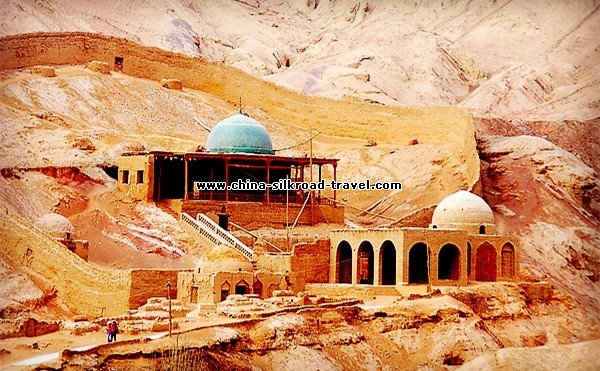
- Tuyoq Valley
We will meet you at the railway station and drive to Turpan and check into the hotel. The drive takes about 40 minutes. We will then visit the Astana Tombs, the Flaming Mountain, Tuyoq Valley, Bezklik Grottoes and a local Uyghur family in the Vineyard.
Astana Tombs: This is the graveyard of the residents who lived in the Gaochang City in the Jin-Tang period. Between 1959 and 1975, a great number of cultural relics had been unearthed, including Chinese documents, textiles, epitaphs, coins, clay sculptures, pottery, wooden wares, silk-paintings, crops and foods, etc. The site is known as the Underground Museum.
The Flaming Mountain: The Flaming Mountain is famously described in the classic Chinese mythological novel “Journey to the West”. It runs west from Shanshan County, is 98 km in length and 9 km across, with a relative height of 500 meters and the highest peak at 832 meters. The mountain is a branch range of the Bogda Mountain, formed in the orogenic movements of the Himalayas. This is the hottest place in China. The highest air temperature in summer is 47.8 degrees Centigrade, and the ground is over 70 degrees Centigrade in summer. Many years of volcanic activity have formed the unique crisscrossing gullies and ravines. During mid-afternoon the heat becomes intense as the sun's rays are reflected off the red rocks, as though the hillsides are engulfed by tongues of fire, hence the name.
Tuyoq Valley: This is a 12 km long primitive Uighur agricultural valley about 70 km from Turpan, with vineyards and fields in the northern and southern valleys and a narrow ravine that connects them. It is a Muslim religious pilgrimage site. The southern mouth of the valley has big Uighur mosques older than the Sugong Minaret and a cave thought by many to be described in the Koran. About a kilometer from the cave shrine is a group of grottoes that have some Buddhist and Nestorian artwork. These grottoes are said to date from the West Jin Dynasty (265AD-316AD), and are considered to be the earliest in Turpan. Most of the murals are damaged. Fortunately, 10 of the grottoes still have some of the preserved murals. These precious murals are very unique in style.
Bezeklik Grottoes: The Bezeklik Grottoes, or Thousand Buddha Caves, is a complex of Buddhist cave grottos dating from the 5th to 14th century between the cities of Turpan and Shanshan at the north-east of the Taklamakan Desert near the ancient ruins of Gaochang in the Mutou Valley. They are high on the cliffs of the west Mutou Valley under the Flaming Mountains, and most of the surviving caves date from the West Uyghur kingdom around the 10th to 13th centuries. There are 77 rock-cut caves at the site. Most have rectangular spaces with rounded arch ceilings often divided into four sections, each with a mural of the Buddha. The effect is of entire ceiling covers with hundreds of Buddha murals. Some murals show a large Buddha surrounded by other figures, including Turks, Indians and Europeans. Some of the murals are masterpieces of religious art.
Local Uyghur Family with Vineyard: Turpan is a kingdom of Grapes, all the local Uyghur families plant grapes at the back of their house. Local Uyger family visiting is a special experience for you to see their lifestyle in the fireland.
Day 9
Turpan-
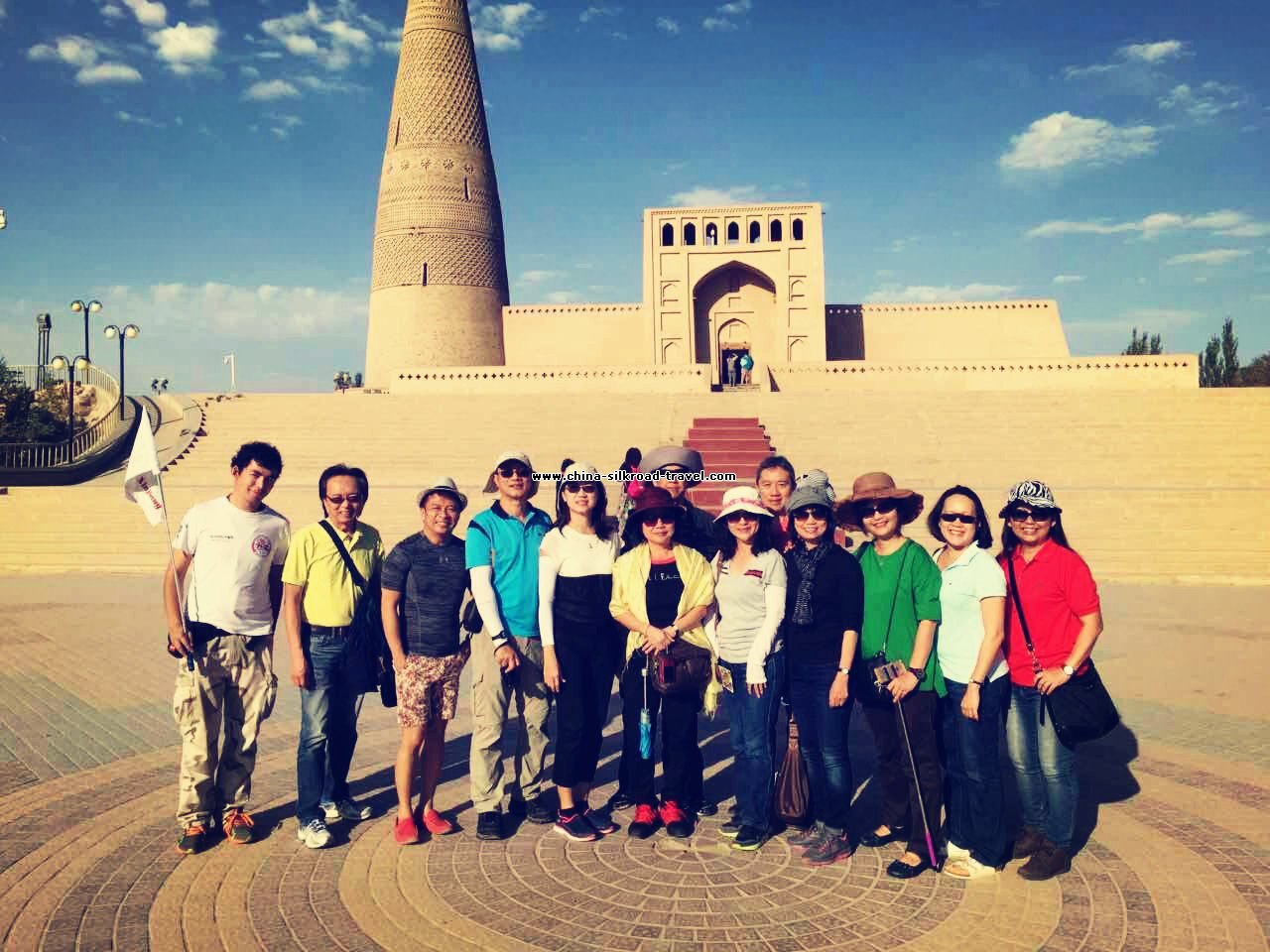
- Sugong Minerat
In the morning we will visit the Jiaohe Ruined city, Karez Irrigation system, Sugong Minerat. After that we will send you to the railway station to take the night train to Dunhuang.
Jiaohe Ancient City Ruins: The city's name means 'River City'. It was founded during the first century BC and abandoned during the 15th century. It is located atop a steep cliff on a leaf-shaped plateau between two deep river valleys in the Yarnaz valley 10 km to the west of Turpan City. It runs northwest to southeast, 1760 meters long and 300 meters across at the widest part. The ruins include city gates, streets and lanes, government office, temples, domestic houses, cave houses, wells, and an underground temple. It is part of the UNESCO World Heritage Silk Road Sites.
Ancient Gaochang City: In its heyday, the ancient city of Gaochang must have shone like a precious stone inlaid in the barren Gobi Desert on the silk road. It is located at the foot of the Flaming Mountain, about 46 km southeast of Turpan. It was initially built as a garrison town in the first century BC. It was a key point along the Silk Road. As one of the key points along the Silk Road, the ancient city of Gaochang was also a sanctuary of world religious culture. Xuanzhuang, a renown Buddhist monk during the Tang Dynasty stopped here and delivered lectures on his way to India. After 2,000 years, the weather-beaten ancient city still provides glimpses of its past greatness and glory. Even though the walls are incomplete now the magnificent outline remains. The remains standing here remind us of the grandeur and prosperity of the ancient city.
Karez Irrigation System: The ancient Karez Irrigation System, which is still used today, is a unique irrigation system in Turpan. It takes advantage of the slopes, draws the underground water to flow by itself to irrigate farmland. It consists of four parts: vertical wells, underground channels, ground canals, and small reservoirs.
Sugong Minaret: Located in Mura Village 2km to the east of the city of Turpan, the minaret tower was built in the 41st year of the long reign of Qianlong Emperor during the Qing Dynasty. It is the embodiment of the ancient architectural arts of the Uighur people. The body of the tower is cylindroid in shape, built with bricks arranged in various symmetrical patterns on the outer wall. The tower has 14 windows and a spiral staircase inside going to the top.
Day 10
Dunhuang-
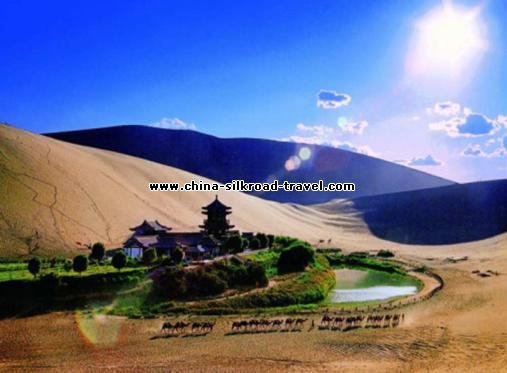
- Echoing-Sand Mountain
We will meet you at the train station and then drive to Dunhuang. We will visit the famous Mogao Grottoes, Echoing-Sand Mountain and the Crescent Lake, where you can try camel riding like the ancient traders on the Silk Road.
Mogao Grottoes: The Mogao Grottoes, a shrine of Buddhist art treasures, is 25 km from downtown Dunhuang on the eastern slope of Mingsha Shan (Echoing Sand Mountain). A network of plank-reinforced roads plying north to south 1600 meters long lead to the cave openings, which are stacked five stories high, some reaching up to 50 meters. Incidentally, Mogao means high up in the desert. According to Tang Dynasty records, a monk had witnessed onsite a vision of thousand Buddhas under showers of golden rays. Thus inspired, he started the caves construction work that spanned a millennium, from the 4th to the 14th centuries. What remains today is truly awe inspiring, and is likely the world’s richest treasure house of Buddhist sutras, murals and sculptures. Please note that cameras are not allowed inside the grottoes.
Echoing-Sand Mountain and Crescent Lake: Together with the Crescent Spring and the Mogao Caves, the Echoing-Sand Mountain is the most popular tourist site in Dunhuang. Echoing-Sand Mountain, known as Mingsha Mountain to the Chinese, is 5 km to the south of Dunhuang and is famous for the constant sound of the moving sand. Legend has it that many years ago a horrific battle was fought here, and the sounds we hear today were the haunting cries of soldiers buried in the sand dunes. Situated within the Echoing-Sand Mountain Park, the Crescent Moon Lake is literally an oasis in the desert. The lake’s name derives from the crescent moon shape taken by the pool of spring water between two large sand dunes. Although the surrounding area is very dry, the pool surprisingly doesn’t dry up as one might expect.
Day 11
Dunhuang-
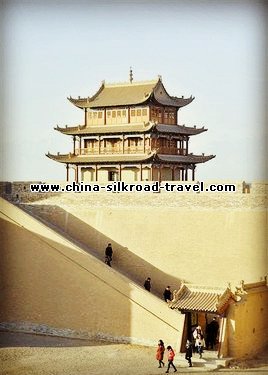
- The Tang Dynasty show
After breakfast you will be transferred to the airport to take the flight to Xi'an. After arriving in Xian, we will visit the astounding Terra-cotta Warriors and Horses, the Bell Tower and the Wild Goose Pagoda. We will enjoy the Tang Dynasty show in the evening.
The Terra-cotta Warriors and Horses: This is one of the greatest archaeological findings of the 20th century - the army of terra-cotta warriors and the bronze chariots entombed in vast underground vaults at emperor Qin Shi Huang's tomb from two thousand years ago. It is a sight not to be missed by any visitor to China. Emperor Qin Shi Huang ascended to the throne of Qin at the age of 13 in 246 BC. Under him, Qin conquered the other six warring states and became the first true emperor, or Shi Huang, of China.
The Bell Tower: This is the emblem of Xian city. It was used to keep time for the town and to sound alarms. This huge tower was originally built in the 14th century, and was relocated in 1739.
Big Wild Goose Pagoda: The Big Goose Pagoda is where the renowned Buddhist Master Xuanzang (Monk Tripitaka) stored his classics brought back all the way from India. The pagoda is one of the oldest structures in China. Originally it consisted of a brick structure of five storeys and was about 60 meters high. It was first built in 589AD during the Sui Dynasty. Between 701AD and 704AD during the reign of the Empress Wu Zetian five more storeys were added to the pagoda making it ten in all.
The Tang Dynasty show: This is the show that presents the palace dances and songs from the Tang Dynasty (618AD-907AD) when Xian was the capital of China.
Day 12
Xi'an-
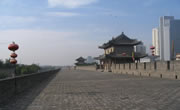
- City Wall
After breakfast we will visit the Shaanxi History Museum, Xian City Wall, and the Grand Mosque. After that you will be transferred to the airport to take the flight to Chengdu and check into the hotel. After dinner, we will enjoy the Face-Changing performance. which is an important aspect of Chinese Sichuan opera. Performers wave their arms and twist their heads, and their painted masks change instantaneously and repeatedly.
Shaanxi History Museum: This provincial museum is one of the major museums in China. It holds numerous unearthed cultural artifacts from within the Shaanxi province as well as the rest of China. It covers 65,000 square meters, with a building area of 60,000 square meters. The newly built modern building recreates Tang-dynasty architecture and successfully symbolizes the great extent of Shaanxi history and its remarkable culture.
The Ancient City Wall: This is the most complete city wall that has survived in China as well being one of the largest ancient military defensive systems in the world. It was enlarged in Ming Dynasty (1368-1644) from the city wall initially built in Tang Dynasty (618 -907). Now it is 12 meters tall, 12-14 meters wide covering 14 kilometers in length with a deep moat surrounding it. The City Wall has corner towers, ramparts, sentry towers, gate towers, battlements and a number of city defensive fortifications with very strong defense capability. You can walk, even cycle on the wall. Its south gate is the largest with a suspension bridge. Most of the tourists choose the south gate for sightseeing.
Grand Mosque (and Old Muslim Quarter): The Grand Mosque is a Chinese traditional Alhambresque architecture with a long history and grand scale, and is a great combination of Islamic and Chinese culture. It was recorded that it was established in the first year of the Tian Bao reign by the Tang Dynasty Emperor Li Lung Ji (685AD-762AD). After renovations and expansions on several occasions in the Song, Yuan and especially the Ming and Qing Dynasties, it gradually took on the current appearance. The whole mosque has more than 12,000 square meters, the floor space more than 4,000 square meters. The construction is mostly in the Ming Dynasty style. The Mosque therefore has much Chinese traditional touch in both its design and artistic outlook. Besides the style peculiar to Islamic mosques, this Mosque also holds characteristics of Chinese pavilions with painted beams and engraved ridgepoles. The Grand Mosque and the Muslim Quarter are now an important cultural preservation of Shanxi Province and a national-level historical/cultural preservation site.
Day 13
Chengdu-

- Panda Research Center
Chengdu is famous for its rich natural resources, as well as the adorable Giant Panda. Before catching your flight to Lhasa, we will head to the Panda Reserve to see this most interesting creature. Later, upon your arrival at Lhasa Gonggar Airport or Lhasa Train Station, our Tibetan guide and Tibetan driver will pick you up with your name sign, and then they will transfer you to Lhasa city. Our guide will give a brief introduction about your tour and explain in detail the tour arrangements for the next few days in Tibet. You should first have a good rest at the hotel to acclimatise to the high altitude. Perhaps at around 8pm you may want to have a light walk near the hotel to check out how you feel.
Panda Reserve: This is the Giant Panda Breeding and Research Centre - Zoos, scientific research centers, breeding centers, or semi-protected areas work together to maintain a self-sustaining population of a given species. This population may serve as a hedge against extinction of the species, as well as a reservoir for improved understanding of its natural history. The Chengdu Panda Base is an example of a scientific institute engaged in research towards conservation. The goal is not only to provide technical support for scientific research on wild pandas, but also to increase the wild population through improved management and, ultimately reintroduction of individuals into areas from which the populations have declined. Research at the Chengdu Panda Base focuses on the advancement of wildlife conservation in China.
Day 14
Lhasa-
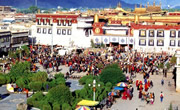
- Jokhang Temple
On this second day morning we will take a very easy visit to Jokhang Temple and Barkhor Bazaar. Jokhang Temple, the product of Han, Tibetan and Nepalese architectural techniques, is the most revered shrine in all of Tibet and is constantly bustling with devoted worshippers. Everyday, pilgrims from every corner of Tibet trek a long distance to the temple.
In the afternoon we will visit the Sera Monastery, a fifteenth century sprawl of golden roofs and whitewashed walls. This well-preserved monastery is located 5 km to the north of central Lhasa city. Sera may not be as grandiose as Drepung, but is more serene, surrounded by many small temples. The 'Buddhism Scriptures Debating' in Sera is very famous. Please be aware of the activities always begin in the afternoon except Sundays.
Day 15
Lhasa-
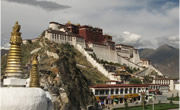
- Potala Palace
Today we will visit the Potala Palace. A trip to Tibet is a big loss without experiencing the vital Potala Palace. Potala Palace is a structure of massive portions. Its towering image already appearing on various occasions, but your first sight of the Potala will still be an awe-inspiring moment. We will visit those rooms, halls and chapels.
Another visit is to Drepung Monastery, once the world's largest monastery, housing 10,000 monks. It lies hidden in rocky ridges just beyond the city. Drepung Monastery is about 8km west from central Lhasa. These white monastic buildings piled up on the hillside. Walking up to the hill is a pleasant thing, an easy break from the solemn ambience inside the halls and chapels. At the plat roof of hillside, you can have very good views of the whole Lhasa city and the distant mountains.
Day 16
Lhasa Geothermal-
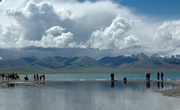
- Nam Tso Lake
To experience the natural views of Tibet is a dream of many tourists. This one-day roundtrip tour will offer you great opportunity to see the real Tibet. You will see the great mountains, huge grasslands, local nomads, sheep, yaks, goats, horses, most importantly, you will feel the pure huge Lake Nam-Tso, which is 4718m high. It is the second-largest saltwater lake in China, the first being Koko Nor (Qinghai-Lake) in Qinghai province. More and more people want to visit this holy lake. In clear weather the water is a miraculous shade of turquoise and there are magnificent views of the nearby mountains. The wide-open spaces, dotted with the tents of local drokpas (Nomads) are intoxicating. On the way back to Lhasa, we can stop in Yangpachen Hot spring where we can enjoy the hot spring service on our own if we want.
Day 17
LhasaYour personal driver and the guide will see you off to airport to take the flight to Kathmandu. And hopefully your short Lhasa tour will leave you with unforgettable memory for the rest of your life. Upon arrival in Kathmandu, our Nepalese guide and the driver will meet you at the airport and transfer you to the hotel to check in. There will be a short briefing on your tour, after which you will have the afternoon free to take a rest.
Day 18
Kathmandu sightseeing tour-

- Swayambhunath Stupa
After breakfast we will take a sightseeing tour of Swayambhunath Stupa (Monkey Temple) and Kathmandu Durbar Square where you will visit Kumari -the Living Goddess of Nepal, Legendary Kasthamandap Temple, Hanuman Dhoka Palace and many other shrines. You will proceed to a tour of Patan City to have look at, and perhaps study, many beautiful and interesting arts and architecture and historic and cultural phenomena. In the evening, we will have a typical Nepali dinner with folk dance performances.
Day 19
Kathmandu sightseeing tour-
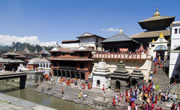
- Pashupatinath Temple
After breakfast, we are going to have sightseeing tour of Pashupatinath Temple the holiest Hindu Temple on the bank of Bagmati River. Cremation services take place on the banks of Bagmati River. Then we will proceed to the tour of the biggest of the Buddhist Stupa architecture. Erected in the 17th century and is believed to be a "must visit" pilgrimage site for Buddhist in their lifetime. Boudhanath area is densely inhabited by Tibetan migrants and carries the name as Little Tibet. After that we will have a tour of Bhaktapur City, which is just 14 km east of Kathmandu. Bhaktapur means the city of devotees and is a center of potter and intriguing masks. The major sight seeing places are, Durbar Square, of 55 windows, Nyatapola, Bhairavnath Temple, and Dattatreya Temple etc.
Day 20
Your DestinationWe will transfer you to the airport to take the flight to your next destination or home.
| Travel in party of |
Superior Class ★★★★★ |
Deluxe Class ★★★★ |
Tourist Class ★★★ |
| 2-5 persons | $ | $ | $ |
| 6-9 persons | $ | $ | $ |
| 10 persons & above | $ | $ | $ |
| Single room Supplement | $ | $ | $ |
Service included:
√ Meals as listed in the itinerary, B=breakfast; L=lunch ;
√ Personal Guide & Driver + Private car / van for Private Transfers & sightseeing
√ Hotels (twin share bases) as listed in the itinerary .
√ Domestic flights or trains as listed in the itinerar
√ Airport Taxes: US$30 for domestic,
√ Service Charge & Government Taxes .
√ Luggage Transfers between airports and hotels
Service excluded:

